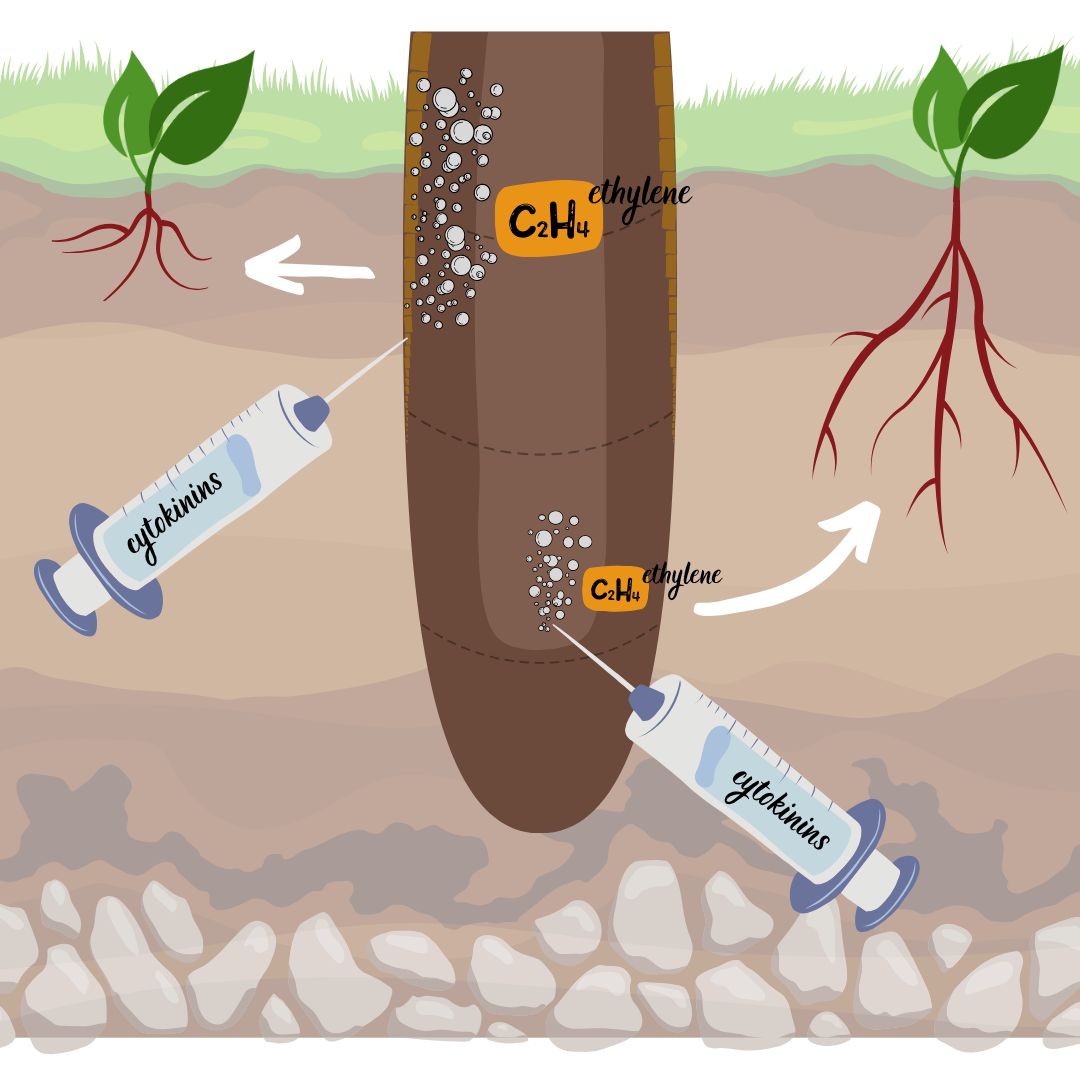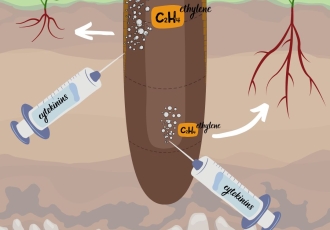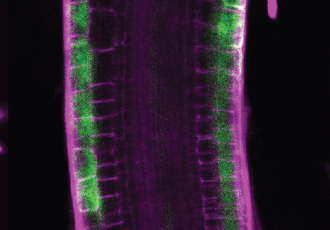10. July 2024
As sessile organisms, plants are masters of regulation, using a variety of chemical signals. Two of the principal regulators of plant growth and development are the plant hormones cytokinins and ethylene. Scientists have long known that these two substances work together to control plant growth. Yet there is still much confusion about how exactly this process works, especially when it comes to root growth. A recent study by scientists at CEITEC Masaryk University (MUNI) has provided new insights into how the two substances work together at the molecular level and how they affect root growth.
Both cytokinins and ethylene are plant hormones that help plants grow. Cytokinins promote cell division and growth, while ethylene helps regulate processes such as fruit ripening and abscission. Although they might seem to have opposite effects, in many cases they work together to influence how long a plant's roots will be via controlling the growth zone at the tip of its root, the so-called apical root meristem.

Research by Jan Hejátko's team at CEITEC MUNI has recently revealed that the action of cytokinins and ethylene at specific positions in the roots has different effects on root length and root apical meristem: If cytokinin levels are increased in the outer tissues ("skin") of the root, which protect the root and absorb water and nutrients, this leads to a shortening of the root and root meristem. Compared to that, when cytokinin production is activated in the inner root tissues responsible for transporting water, minerals and nutrients throughout the plant, only the size of the root meristem is affected, while the root length remains nearly the same. Ethylene plays an essential role in this process, regulating specific enzymes and influencing the elongation or shortening of cells in the plant roots. The researchers have also identified specific enzymes that help produce ethylene and a completely new mechanism by which cytokinins control the activity of these enzymes. This unique mechanism involves a direct interaction between two proteins involved in signal transduction of both cytokinins and ethylene. This work is the result of intensive collaboration of Jan Hejátko's laboratory at CEITEC with top international and domestic laboratories, including Caltech (USA), University of Olomouc (Czech Republic), Ghent (Belgium) and Tübingen (Germany). Their findings were published in the prestigious international journal Plant Communications.
The cooperation between cytokinins and ethylene is an example of how complex and sophisticated plant regulatory mechanisms are. These new findings are of great importance for our understanding how plants regulate their growth and may also help in the development of new agricultural techniques that use this knowledge to better control crop growth and yield. For example, they could lead to methods that allow targeted regulation of root growth, which is crucial for plants to ensure optimal nutrient and water uptake.


 Share
Share



